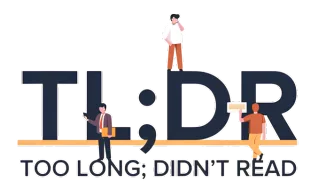EigenLayer, the restaking protocol that took Ethereum by storm last year, finally has a key piece of its puzzle in place: slashing. It’s a bit like building a car and then realizing you forgot the brakes. Not ideal, but they got there. For a year, folks were restaking – essentially double-dipping on staking rewards – without a real way to punish bad behavior. Now, that’s changed.
- EigenLayer introduces slashing, a mechanism to penalize bad behavior in restaking, where users stake their ETH on both Ethereum and other projects. This addresses a key concern about the protocol’s security and stability.
- The slashing system works through operators who distribute restaked ETH to Actively Validated Services (AVSs); operators risk losing a portion of their stake if they or an AVS misbehaves. This provides a financial incentive for responsible participation.
- EigenLayer’s updated system allows operators to limit their exposure to individual AVSs, preventing a problem in one AVS from cascading through the entire system. This compartmentalization of risk enhances the overall security of the restaking protocol.
Founder Sreeram Kannan says “the whole promise has been delivered.” Which is a good line, honestly. EigenLayer lets you stake your ether (ETH) not just on Ethereum itself, but also on other, newer projects built on top of it. Think of it as lending your security to the little guys, and getting paid extra for it. But without slashing, those little guys could, well, act up, and there wasn’t much to stop them. It’s a bit like trusting someone with your car keys without asking for a deposit.
Keeping Things Honest
The system works through “operators” – think of them as middlemen who pool restaked ETH and distribute it to these new projects, called AVSs (Actively Validated Services). If an operator messes up, or an AVS turns out to be malicious, slashing kicks in. They lose a portion of their stake. It’s a financial incentive to play nice. Kannan explains it’s about accountability, and points out that even Solana doesn’t *always* have slashing enabled. Which, you know, is a thing.
Currently, EigenLayer holds over $7 billion in restaked assets. That’s a lot of ether trusting this system. The rollout isn’t instant, though. AVS teams have to opt-in to the slashing feature, so it’ll take time to see it fully implemented. It’s not a flick-of-a-switch situation. More like slowly turning a very large key. But the fact that it’s *possible* now is a big deal. It addresses a major criticism that the initial hype didn’t match the technical reality.
The redesign of the slashing system was crucial. Last year, there were concerns that EigenLayer was introducing a dangerous amount of leverage into the Ethereum ecosystem. The idea was that a problem on one AVS could potentially ripple through the entire system. Kannan insists they’ve “completely cured that problem.” The new system allows operators to limit their exposure to individual AVSs, so one bad apple doesn’t spoil the whole bunch. It’s like compartmentalizing risk – a sensible move, really.
Essentially, the system now ensures that each AVS has a clearly defined amount of “slashable” stake, and that stake isn’t being double-counted. This means there’s no hidden leverage lurking beneath the surface. And even if an AVS has a small amount of stake at risk, it’s still protected by the overall size of the restaked asset pool. It’s a bit like having a small boat in a very large ocean – the ocean provides a certain level of stability, even if the boat is small.
Kannan admits they’ve been under more scrutiny than other incomplete proof-of-stake systems because they talked so much about slashing upfront. “We’ve talked a lot about slashing, so we are held to that bar,” he said. Fair enough. It’s hard to promise the moon and then deliver…well, anything less. But now, they’ve delivered a crucial piece of the puzzle, and EigenLayer is looking a lot more secure – and a lot more like the ambitious project it set out to be.

















